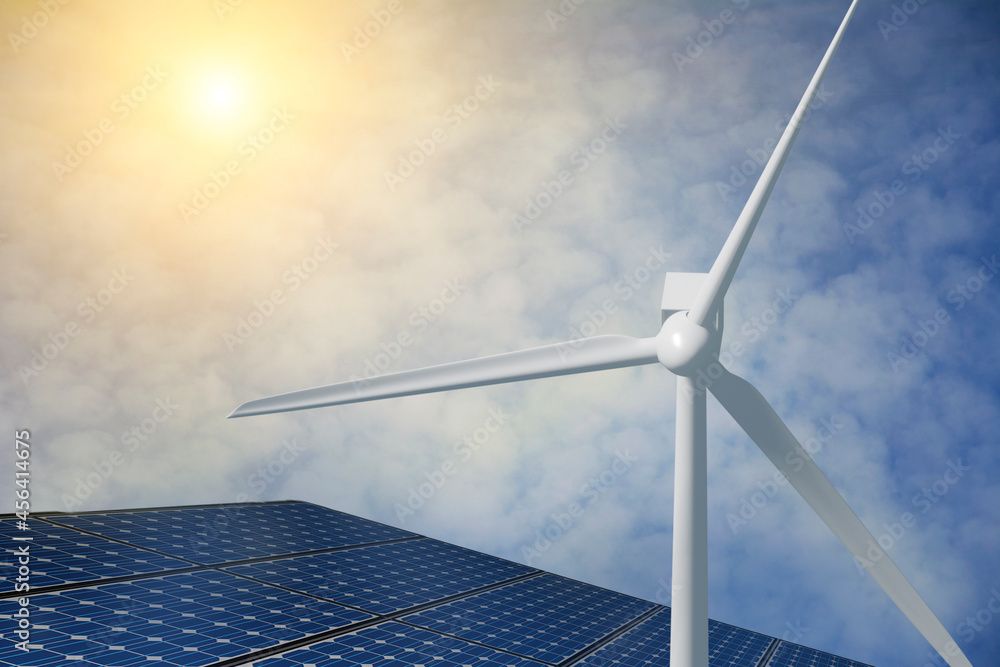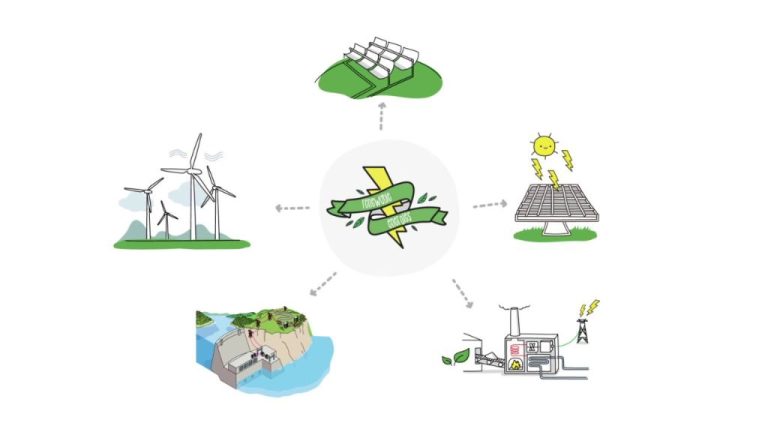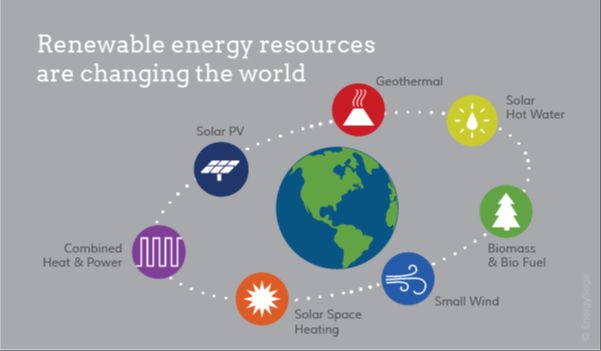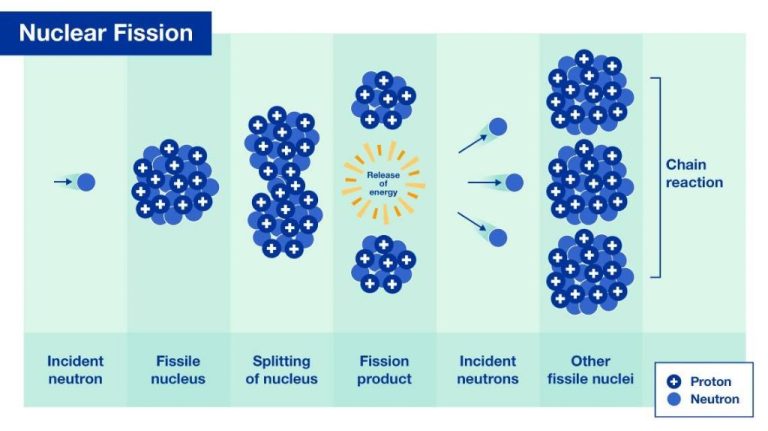What Will Eventually Happen To Non Renewable Energy?
Nonrenewable energy sources are sources that cannot be replenished in a short period of time. The four major types of nonrenewable energy are fossil fuels, coal, natural gas, petroleum, and nuclear energy from uranium (Nonrenewable – Energy Kids). These sources take thousands to millions of years to form naturally and their supplies are finite. Once they have been completely extracted and used up, they cannot be replenished in a short period of time. That’s why they are considered nonrenewable.
The key issues with nonrenewable energy sources are that they significantly harm the environment, contribute to climate change through greenhouse gas emissions, and will eventually run out. Continued long-term use of nonrenewable sources is unsustainable, as their supplies are limited and will be depleted if consumption continues at the current rate. This is why there is a global push to transition to renewable energy sources that can be replenished in a short time and do not run out.
Fossil Fuels
The world’s supply of fossil fuels is finite and non-renewable. Fossil fuels like coal, oil, and natural gas take millions of years to form, yet they are being depleted at a rapid rate due to human consumption.
Coal is expected to be depleted first. According to research, at current rates of production “global coal reserves are estimated to run out in around 150 years” (https://mahb.stanford.edu/library-item/fossil-fuels-run/). Once coal is depleted, this will impact electricity generation in many countries that rely on coal power plants.
Oil is predicted to run out next, likely by 2052 (https://group.met.com/en/mind-the-fyouture/mindthefyouture/when-will-fossil-fuels-run-out). The loss of oil will drastically impact transportation, manufacturing, and other sectors. Plastics production may also be affected since oil is a key ingredient.
Natural gas could be depleted by 2060 in some forecasts (https://group.met.com/en/mind-the-fyouture/mindthefyouture/when-will-fossil-fuels-run-out). This will reduce access to natural gas for heating homes, generating electricity, and other uses. Energy prices may rise as a result.
Overall, the depletion of fossil fuels will require major transitions to renewable energy sources to avoid potential energy shortages and price spikes. Conservation efforts and improved energy efficiency will also help extend remaining supplies.
Nuclear Power
Nuclear power currently provides about 10% of the world’s electricity. The most common fuel for nuclear reactors is uranium-235, which must be enriched from naturally occurring uranium. According to the World Nuclear Association, identified uranium resources are sufficient for over 100 years of supply based on current requirements [1]. However, breeder reactors and reprocessing of spent fuel could extend uranium supplies for thousands or even millions of years [2]. Breeder reactors create more fissile fuel than they consume by converting non-fissile uranium-238 into plutonium-239. In theory, 4.5 billion tons of uranium-238 in the Earth’s crust could provide over 60,000 years of energy via breeder reactors.
Some scientists estimate that seawater uranium extraction could extend supplies further. Though uranium concentrations are low, the volume of seawater on Earth contains about 4 billion tons of uranium, which could fuel breeder reactors for billions of years [3]. Thus, viable nuclear fuel is abundant enough to outlast other limited resources like fossil fuels. With improved reactor technology and fuel reprocessing, nuclear power can provide abundant energy far into the human future.
Transition to Renewables
As non-renewable energy sources like fossil fuels and nuclear power are finite, the world is transitioning to renewable energy sources like solar, wind, hydro, and geothermal to replace them. According to the International Energy Agency, renewables accounted for over 42% of global electricity generation in 2028, with the share of wind and solar PV doubling to 25% (IEA). Statista projects an annual growth rate of 3.88% for renewable energy from 2024-2028 (Statista). Renewable energy is the fastest-growing energy source in the United States as well, increasing 90% from 2000 to 2020 (C2ES). As the costs of wind, solar, hydro, and geothermal technologies decrease and efficiency increases, they are expected to continue displacing non-renewable sources and make up a greater share of global energy production.
Energy Conservation

One of the key ways to reduce demand for nonrenewable energy sources like fossil fuels is to improve energy efficiency across sectors like homes, transportation, and industry. Studies show that energy efficiency improvements in the U.S. since 1980 have contributed significantly to reducing energy demand (Energy Efficiency Impact Report). By getting more economic output from the same amount of energy input, efficiency helps curb fossil fuel consumption and carbon emissions (IEA).
In the building sector, improving insulation, using more efficient appliances and lighting, and upgrading to high efficiency HVAC systems can dramatically cut energy needs. For transportation, improving fuel economy standards, shifting toward electric and hybrid vehicles, and promoting public transit over private car use reduces oil consumption. Manufacturers can employ advanced technologies and processes that require less energy input per unit of industrial output. Across sectors, behavioral change and conservation initiatives like smart metering and demand response programs also play a role in tempering demand.
Overall, continuing to maximize energy productivity through both technical and behavioral improvements will be critical to easing the transition away from finite fossil fuel reserves. The IEA projects that energy efficiency gains could deliver over 40% of the carbon reductions needed to reach global climate goals (IEA). Targeted policies, incentives, R&D investments, building codes, and educational campaigns will all be needed to realize the full potential of energy efficiency.
Energy Storage
Developments in energy storage technology are critical to enable the widespread adoption of renewable energy sources like solar and wind power. As MIT reports, energy storage solutions must be co-optimized with renewable generation and transmission systems to maximize efficiency and reliability (source). Advances in battery technology, like solid-state batteries and flow batteries, will allow for longer duration energy storage from intermittent renewables (source). Other storage methods like pumped hydro and compressed air can provide large-scale, long-duration storage.
Lithium-ion batteries have dominated the storage market, but new chemistries are emerging. Sodium-ion and zinc-based batteries offer lower cost and better safety compared to lithium-ion. Flow batteries using vanadium and zinc bromine chemistries can provide utility-scale storage. Pumped hydro can store gigawatt-hours of electricity by pumping water uphill and generating power when it flows back down. Emerging technologies like liquid air energy storage and gravitational energy storage in rail cars also show promise for long-duration, large-scale energy storage.
Falling prices and improved performance is enabling more deployment of battery storage co-located with renewables and on the grid. The MIT study predicts the global storage market will expand from 6 gigawatt-hours today to as much as 10,000 gigawatt-hours by 2050. Energy storage is a key enabler for transitioning to renewable energy.
Policy Changes
Governments around the world are implementing policies and incentives to accelerate the transition from fossil fuels to renewable energy sources. Some key policies driving this change include:
Tax credits and rebates for renewable energy projects and electric vehicles. For example, the United States offers an investment tax credit for solar projects that covers 26% of system costs in 2022-2023 (https://www.energy.gov/scep/slsc/policies-and-programs).
Renewable portfolio standards that require utilities to source a minimum percentage of their electricity from renewables. As of 2021, 30 U.S. states have adopted renewable portfolio standards (https://www.epa.gov/statelocalenergy/state-renewable-energy-policies).
Feed-in tariffs that offer long-term contracts with guaranteed pricing to producers of renewable electricity. Feed-in tariffs have successfully driven growth in solar and wind in countries like Germany, Spain, and South Korea (https://www.iea.org/reports/20-renewable-energy-policy-recommendations).
Carbon pricing programs that make fossil fuel energy more expensive through carbon taxes or cap-and-trade systems. Carbon pricing provides an economic incentive to transition to cleaner energy sources.
Bans on new fossil fuel vehicles by specified target years, as over 20 countries have now adopted. This transitions the vehicle market toward electric vehicles.
Governments are also removing fossil fuel subsidies and imposing moratoriums on new fossil fuel projects to accelerate the shift to renewables.
Public Opinion
Public concern over climate change has been steadily rising, according to recent surveys. A Pew Research survey showed that 54% of Americans now view climate change as a major threat. Democrats, in particular, are very concerned – nearly eight-in-ten (78%) describe climate change as a major threat. Another survey by Yale climate researchers found high levels of belief that climate change is happening, human-caused, and a threat across most U.S. states.
This growing public concern is putting pressure on leaders to enact policies that accelerate the transition to renewable energy and reduce carbon emissions. Politicians are realizing they need to address climate change or risk losing support. As more citizens demand action, it drives policy changes that speed up the phasing out of nonrenewable energy sources. Public opinion and social movements focused on climate change are becoming a major force pushing for the renewable energy transition.
The Developing World
Providing energy access to developing countries, especially least developed countries (LDCs), is a major challenge. As of 2021, hundreds of millions of people in LDCs still lack basic access to electricity (UNCTAD). Energy poverty impacts quality of life and limits opportunities for economic development. Reliable access to energy is essential for powering homes, hospitals, schools, businesses and more.
Fossil fuels have historically been the primary source of energy expansion, however they come with environmental and supply concerns. Burning coal, oil and natural gas emits greenhouse gases, exacerbating climate change which disproportionately harms poorer nations. Fossil fuel reserves are finite and localized, whereas renewable energy can be generated more widely. As the UN notes, the energy transition to renewables presents opportunities for developing countries to attain universal access and “leapfrog” over fossil fuel dependence directly to clean energy systems.
While renewable energy investment in developing countries is growing, it remains a small fraction of total energy investment. The World Bank reports only 20% of clean energy financing went to the least developed nations in 2018. Targeted policies and funding to expand decentralized renewable energy systems could help bridge the electricity access gap.
Conclusion
Though the timeline is difficult to predict, most experts agree that nonrenewable sources of energy like fossil fuels and nuclear power will inevitably decline over the next 50-100 years as supplies dwindle and renewable energy becomes more widespread. The transition will likely be gradual, with renewables steadily increasing their market share while nonrenewables slowly lose ground. Key factors driving this shift include climate change pressures, technological advances in renewables and energy storage, declining production of nonrenewable resources, and evolving public opinion and policy changes in favor of clean energy. While the developing world may rely more heavily on nonrenewables in the short-term as they build out energy infrastructure, renewables will likely dominate globally by the end of the century. The path forward requires continued investment and policy support to scale up renewables, improvements in energy efficiency, development of grid flexibility and energy storage solutions, and managing the decline of nonrenewable industries and associated workforce transitions. With sustained effort, innovation and political will, a full transition to renewable energy worldwide can be achieved.





